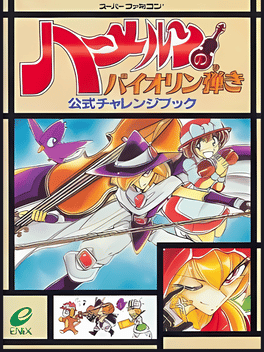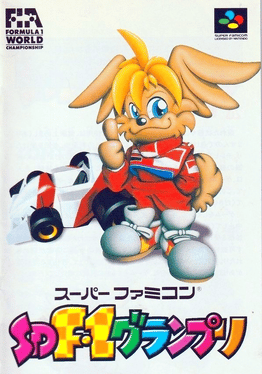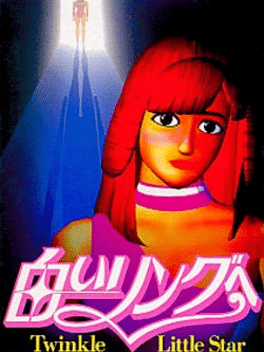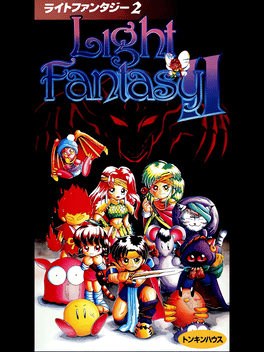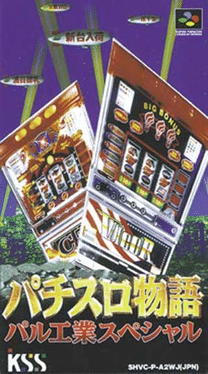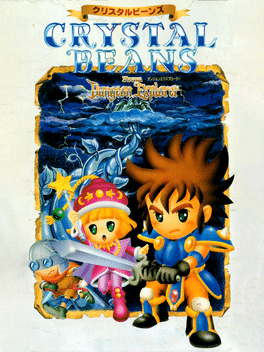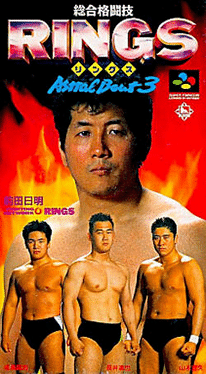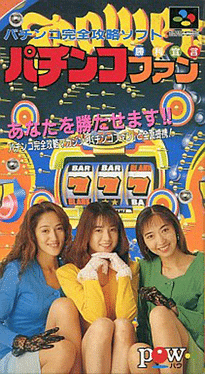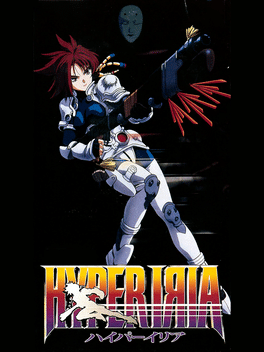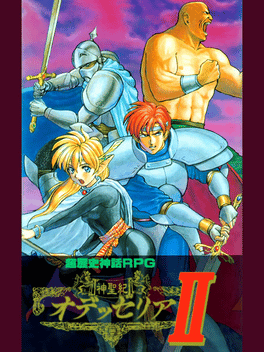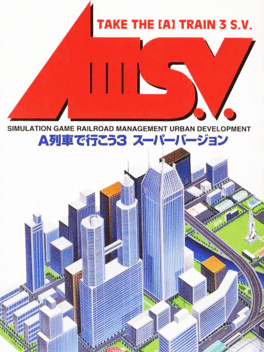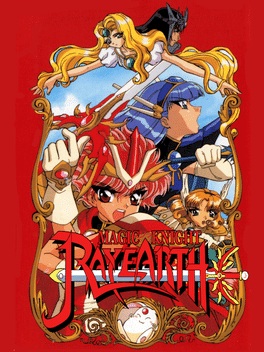New Super Famicom Games - Page 12
-
Hameln no Violin Hiki
1995
Hameln no Violin Hiki is a platform game based on the manga/anime series of the same name. You play the role of Hamel who is an adventurer with a violin as his trusty weapon. Hamel and his mascot Oboe arrives at Staccato, a small town attacked by monsters, and drives them away with his power. Impressed, a cute little girl named Flute decides to go with Hamel in order to find and destroy the evil power behind the attacks. -
Tenchi Muyo! Game-hen
1995
Sasami is kidnapped by a mysterious little girl with magical powers, and Tenchi and his companions must travel to rescue her, battling monsters and other creatures on the way. -
SD F-1 Grand Prix
1995
SD F-1 Grand Prix
1995
SD F-1 Grand Prix is a Racing game, developed and published by Video System, which was released in Japan in 1995. It features animal versions of real-life drivers such as Michael Schumacher and Ayrton Senna. -
Shiroi Ringu he: Twinkle Little Star
1995
Train your very own professional wrestlers and make her the strongest in the world! Face off with rivals and discover friendship in the deeply engaging story mode or take your seasoned wrestler to the test in free play mode. Popular female Japanese professional wrestlers like Shinobu Kandori and Noriyo Tateno appear in this game -
Light Fantasy II
1995
Light Fantasy II
1995
Light Fantasy II is a 1995 sequel to the original game Light Fantasy. Several hundreds years after the events of Light Fantasy, monsters become friendly enough to become companions (like in Pokémon). However, the Goddess from the first game becomes an enemy. The battle system is similar to the first game. The Towers of Light and Darkness no longer exists. Instead, players must explore different villages and dungeons in order to unlock the complete story of the game. There is a Buddhist tower in the game; indicating that the people observe Buddhism in the game. -
Maten Densetsu: Senritsu no Ooparts
1995
Maten Densetsu: Senritsu no Ooparts is a role-playing video game for the Super Famicom. The game takes place in a floating post-apocalyptic Japan. The player emerges in the middle of Tokyo's Akihabara district where the buildings have turned into ruins. Countless demons have managed to destroy cities everywhere and the people are all hiding underground. Getting home to the Shinjuku district will allow the player to uncover more of the plot. Mysterious artificats called ooparts (out-of-place artifacts) help to play a role in this invasion by a mysterious civilization. Players must choose between five characters; each one having different strengths and limitations. The game is played from the first-person perspective and the battles are extremely random. The dungeons in the game are claustrophobic and should remind some games of Shin Megami Tensei. Players do not gain levels after earning so many experience points. Instead, they gain energy points to boost their statistics. -
Pachi-Slot Monogatari: Paru Kougyou Special
1995
Pachi-Slot Monogatari: Paru Kougyou Special is a Miscellaneous game, developed by Kaze and published by KSS, which was released in Japan in 1995. -
Crystal Beans: From Dungeon Explorer
1995
When the Demon Rain falls, The ground will turn to dirt, And the sea will lose its shine. - Legend, from the Grandol Royal Library - There once was a peaceful realm, known as Grandol... There was a time when demons had taken Grandol, and the world was on the edge of destruction. But with the power of the Miracle Gem, peace was restored. Afterwards, the powerful Miracle Gem was shattered and sealed away, since the peace of Grandol had been obtained. Then, on a certain day, one hundred years later... Suddenly, an enormous cloud took over the Grandol sky, and the Demon Rain started to fall. The wicked power of the Demon Rain changed the nature of Grandol. And when the Demon Rain stopped, a castle appeared atop the clouds... At this point, in the aftermath of the Demon Rain, the Demon Holes started showing up. Monsters began to appear from these. The Demon Rain seeped deep underground, where long ago the fragments of the Miracle Gem were sealed with fifteen demons. They reawakened. In the large Rulvesos Castle -
Sougou Kakutougi Rings: Astral Bout 3
1995
Sougou Kakutougi Rings: Astral Bout 3 is a Shoot/Hybrid fighting game featuring the Shoot fighting league known as RINGS fighting network, developed by A-Wave and published by King Records, it was released in Japan in 1995. -
Pachinko Fan: Shouri Sengen
1995
Pachinko Fan: Shouri Sengen is a Miscellaneous game, published by Pow, which was released in Japan in 1994. -
Hyper Iria
1995
Hyper Iria
1995
Iria is the story of a girl and the Alien being she loves to hate. The series begins with her brother, Gren, taking a job. He is a bounty hunter, and one well known for his incredible skill. Iria, being a skilled apprentice bounty hunter herself, tags along. What is the job, one might ask. It is to find out what has happened to the crew and cargo of a Space Station. Needless to say, nothing is as it seems, and the war between Iria and Zeiram begins in earnest. -
Gekitou Burning Pro Wrestling
1995
Gekitou Burning Pro Wrestling featured a staggering, encyclopedic 129 Wrestler roster, plenty of modes to choose from and a insanely customizable array of options to set up match types that was unseen in any other Wrestling game at the time. The wrestlers featured in Gekitou Burning Pro Wrestling span across a multitude of different Wrestling promotions With a diverse cast of recognizable faces all disguised under different aliases including Wrestling Legends, Mixed Martial Artists, Shoot Fighters, Puroresu Megastars, and even Mexican Luchadors. -
Shinseiki Odysselya II
1995
Shinseiki Odysselya II is a Role-Playing game, developed and published by Vic Tokai, which was released in Japan in 1995. -
Supapoon
1995
Supapoon
1995
A cutesy Breakout clone developed exclusively for the Japanese Super Famicom. Supapoon is a Super Famicom game released late in 1995 that presents a colorful world with an elastic blue hero reminiscent of a Dragon Quest slime. The hero's solar system has been invaded by a group of yellow balls wearing triangular shades, and he jumps into action to send them packing. Supapoon is inspired by games like Breakout and Arkanoid, but offers a few twists of its own, like being able to project the ball with additional power by using the "paddle"'s intrinsic elasticity, and a constant timer that ticks down faster whenever the paddle takes damage from skull drops or enemy attacks. The goal of the game is to reflect a ball of energy around a table, ensuring that it doesn't fall off the bottom of the screen. Rather than clearing all the blocks on the screen, which is common for other games of this type, the player only has to remove the yellow balls wearing shades to clear a level. They will receive a bonus for clearing the -
Hi no Ouji: Yamato Takeru
1995
An RPG loosely based on the exploits of Prince Ousu, the titular Yamato Takeru ("The Brave of Yamato"). -
Sgt. Saunders' Combat!
1995
Sgt. Saunders' Combat! is a Strategy game, developed by Play Avenue and published by ASCII Entertainment, which was released in Japan in 1995. -
AIII S.V.: Take the A-Train 3 S.V.
1995
The game puts players in command of a railway company. There are no rival companies; the player controls the only one in the city and the game is resultingly fairly open-ended. A-Train III is the first game in the series to make use of near-isometric dimetric projection to present the city, similar to Maxis's SimCity 2000. There are two types of transport that the player's company can take: passengers or building materials. The former is more likely to be profitable, but building materials allow the city to grow. Wherever the building materials are delivered, they can be taken and used to construct buildings for the city. These start with houses, but eventually, as an area grows, roads, and shops and other buildings are built. These can provide extra revenue for a passenger service, but also allowing the city to develop and grow can be seen as a goal in itself. As well as the buildings built by the computer, in response to the materials being present, the player can construct their own buildings, such as ski resort -
The Heian Fuuunden
1995
The Heian Fuuunden
1995
The Heian Fuuunden is a Strategy/RPG game, developed by Natsume and published by KSS, which was released in Japan in 1995. -
Magic Knight Rayearth
1995
Magic Knight Rayearth is a Role-playing game released by Tomy; released in 1995 in Japan for the Super Famicom (SNES), based on the 1994 anime by Clamp of the same name, Magic Knight Rayearth. -
Derby Jockey 2
1995
Derby Jockey 2
1995
Derby Jockey 2 is a Sports game, developed by Graphic Research and published by Asmik Ace Entertainment, Inc, which was released in Japan in 1995.
